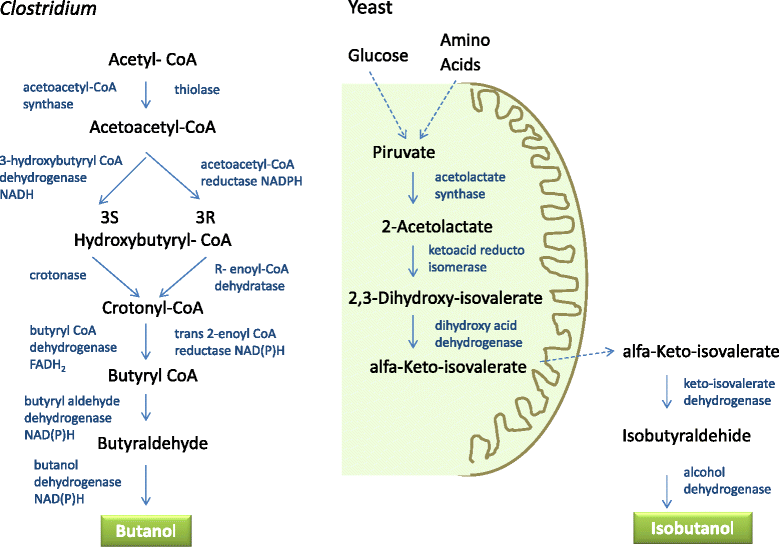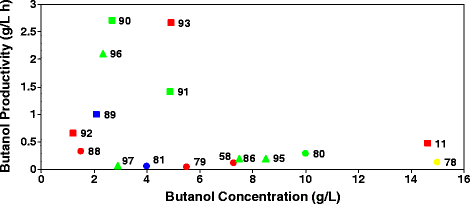Biobutanol from cheese whey
- PMID: 25889728
- PMCID: PMC4404668
- DOI: 10.1186/s12934-015-0200-1
Biobutanol from cheese whey
Abstract
At present, due to environmental and economic concerns, it is urgent to evolve efficient, clean and secure systems for the production of advanced biofuels from sustainable cheap sources. Biobutanol has proved better characteristics than the more widely used bioethanol, however the main disadvantage of biobutanol is that it is produced in low yield and titer by ABE (acetone-butanol-ethanol) fermentation, this process being not competitive from the economic point of view. In this review we summarize the natural metabolic pathways for biobutanol production by Clostridia and yeasts, together with the metabolic engineering efforts performed up to date with the aim of either enhancing the yield of the natural producer Clostridia or transferring the butanol production ability to other hosts with better attributes for industrial use and facilities for genetic manipulation. Molasses and starch-based feedstocks are main sources for biobutanol production at industrial scale hitherto. We also review herewith (and for the first time up to our knowledge) the research performed for the use of whey, the subproduct of cheese making, as another sustainable source for biobutanol production. This represents a promising alternative that still needs further research. The use of an abundant waste material like cheese whey, that would otherwise be considered an environmental pollutant, for biobutanol production, makes economy of the process more profitable.
Figures



References
-
- Durre P. Biobutanol: an attractive biofuel. Biotechnol J. 2007;2(12):1525–1534. - PubMed
-
- Peralta-Yahya PP, Zhang F, Del Cardayre SB, Keasling JD. Microbial engineering for the production of advanced biofuels. Nature. 2012;488(7411):320–328. - PubMed
-
- Xue C, Zhao X, Liu C, Chen L, Bai F. Prospective and development of butanol as an advanced biofuel. Biotechnol Adv. 2013;31(8):1575–1584. - PubMed
-
- Kumar M, Gayen K. Developments in biobutanol production: New insights. Appl Energy. 2011;88(6):1999–2012.
Publication types
MeSH terms
Substances
LinkOut - more resources
Full Text Sources
Other Literature Sources
Molecular Biology Databases

